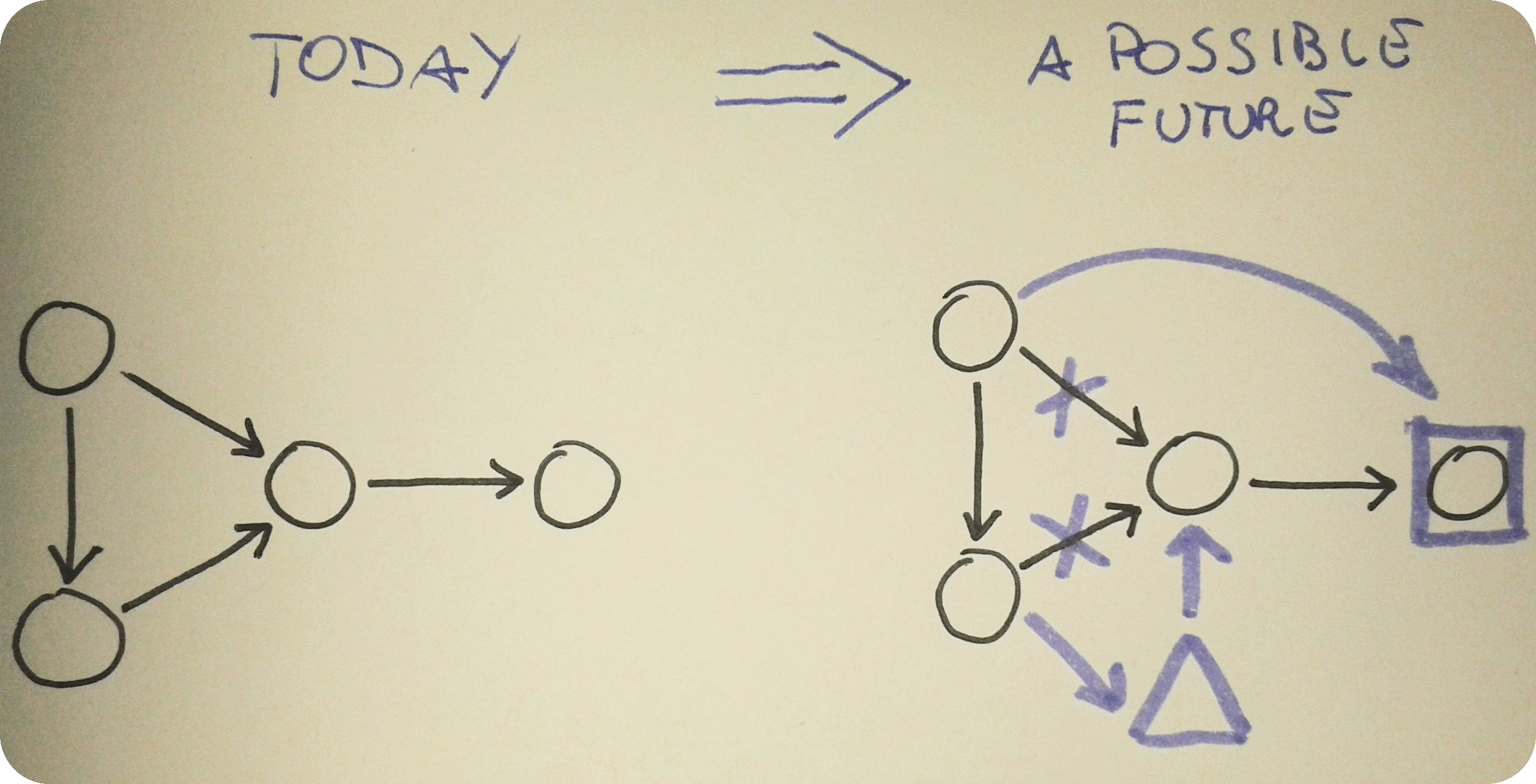As a consequence, it is easy to locally understand an object in isolation, change it, extend it, evolve it, and reuse it.
When talking about encapsulation, the focus often goes to encapsulating the object’s state, the information, the data, the internal object structure.
What about relationships among objects?
OOP does not provide a built-in support, comparable to encapsulation for flexibility, in object interrelationship such that relationships can change without affecting the rest of the program.

The one weakness of OO code is that it is brittle in the face of changes to the relationship between objects and to the structure of objects that are part of an object graph.
Two common examples follow:
- When an object’s unstable dependency changes, it can trigger changes into the object itself and this can start a chain reaction of changes in dependent objects.
- When an object graph changes or some responsibilities or state is moved from one object to another, code traversing the objects and making computations on the traversed objects needs to be changed too, to adapt to the new object graph and the new structure of the objects.
Examples with source code are also available here
[1] and here
[2].
Overcoming the one weakness of OOP is a common design challenge for many software developers building systems with OO languages.
What solutions have been found so far? How do they relate to encapsulation?